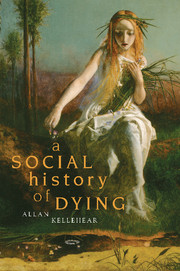Book contents
- Frontmatter
- Contents
- Acknowledgements
- Introduction
- Part I THE STONE AGE
- Part II THE PASTORAL AGE
- Chapter Four The Emergence of Sedentism
- Chapter Five The Birth of the Good Death
- Chapter Six The Second Challenge: Preparing for Death
- Part III THE AGE OF THE CITY
- Part IV THE COSMOPOLITAN AGE
- Conclusion
- Bibliography
- Index
Chapter Six - The Second Challenge: Preparing for Death
Published online by Cambridge University Press: 22 September 2009
- Frontmatter
- Contents
- Acknowledgements
- Introduction
- Part I THE STONE AGE
- Part II THE PASTORAL AGE
- Chapter Four The Emergence of Sedentism
- Chapter Five The Birth of the Good Death
- Chapter Six The Second Challenge: Preparing for Death
- Part III THE AGE OF THE CITY
- Part IV THE COSMOPOLITAN AGE
- Conclusion
- Bibliography
- Index
Summary
Just as the Book of Genesis demonstrated how the eating of an apple signalled the entry of death into the world, so too it is the symbol of the apple that allows us to grasp clearly how we prepare for it. Preparing, as Eric Partridge's dictionary of etymology suggests, is best understood employing a metaphor concerning the humble apple. To ‘prepare’ an apple, writes Partridge, is to pare it, ‘hence to arrange, hence to trim, to adorn’ (1958: 470). And Shipley's dictionary of etymology underlines these preliminaries by derailing our search for ‘prepare’ and directing it instead to the word ‘overture’, reminding us that ‘this comes at the beginning, not when things are over’ (1945: 253).
Like the apple we ‘pare’, we prepare ourselves for death by arranging our affairs, and hence trimming away all that is unnecessary for the journey of death itself, and adorning those who attend us with their new roles, inheritance and words of leaving and comfort. The part of the ‘apple’ that we give to those who attend us during our dying is the ‘skin’ that has covered our individual selves: the social roles and symbols, the material and kin attachments, and our final acts and words that hold up a cultural mirror to the main moral and social ideologies of the day.
Most of the sociological and psychological literature on preparing to die walks us through, as I have done in the last chapter, this ‘shedding’ process of division and inheritance.
- Type
- Chapter
- Information
- A Social History of Dying , pp. 105 - 122Publisher: Cambridge University PressPrint publication year: 2007



